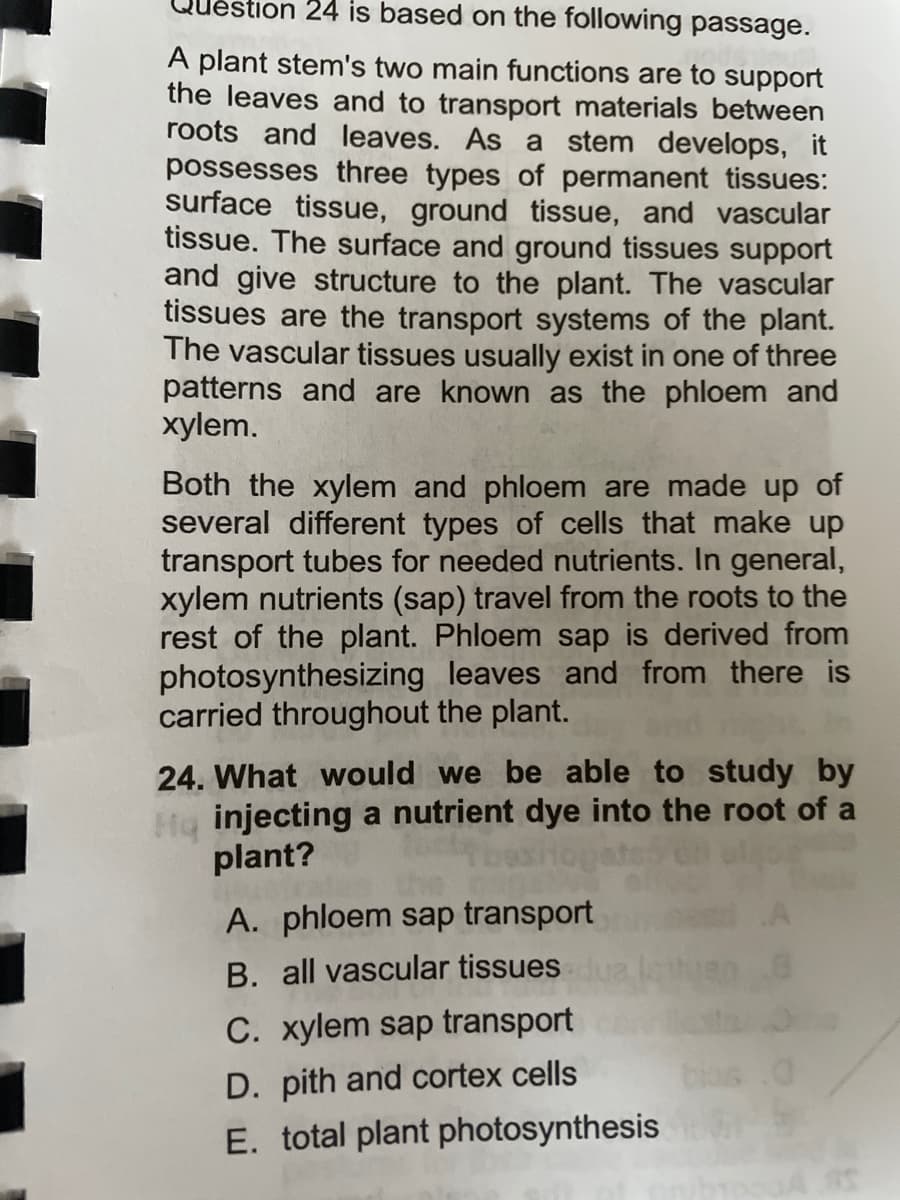24. What would we be able to study by Hg injecting a nutrient dye into the root of a plant? A. phloem sap transport B. all vascular tissues C. xylem sap transport Ox oolle
Plant Structure and Growth
Roots anchor, the plant, ingest minerals and water, direct water and supplements, and store food. These are two kinds of root frameworks.
Plant Life Cycle
Plants are part of the PLANT KINGDOM, which is one of the five kingdoms of life. Plants are divided into smaller classes based on common characteristics. Certain characteristics are shared by all plants. They are made up of a large number of cells. They also make their own food through a chemical process called photosynthesis, which involves the use of water, carbon dioxide, and solar energy. They pump life-giving oxygen into the air as a by-product.
Life Cycle of Plants
All the organisms that belong to the Kingdom Plantae are known as plants. They are multicellular and eukaryotic and can synthesize their food by photosynthesis, known as autotrophic organisms. They are classified based on certain characteristics, such as the plants bear flowers; some have only naked seeds and do not contain flowers. Some plants neither have seeds nor flowers, such as ferns and mosses.
Plant Morphology and Anatomy
The study of life and organisms is biology. The cell is recognized as the basic unit of life by biology. From ancient Greek, biology is recognized. Modern biology deals with the recent developments in Science.

Trending now
This is a popular solution!
Step by step
Solved in 5 steps









